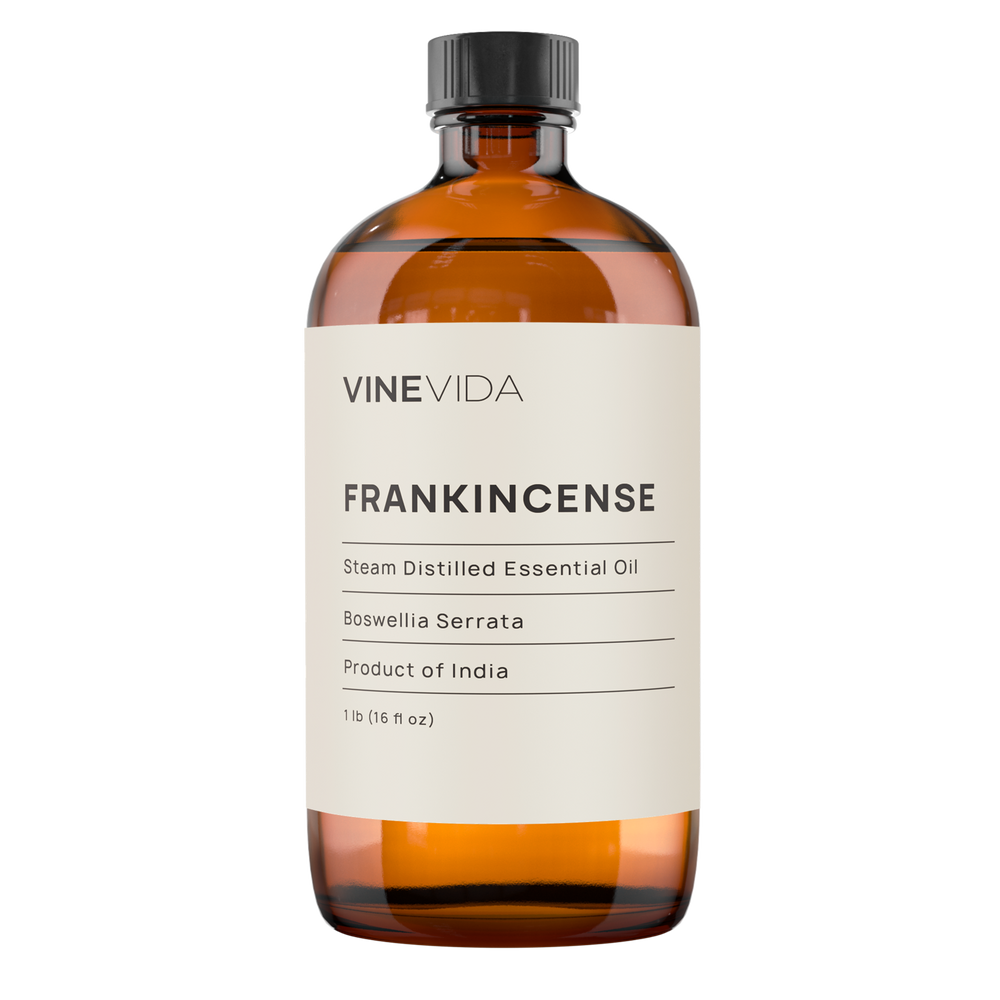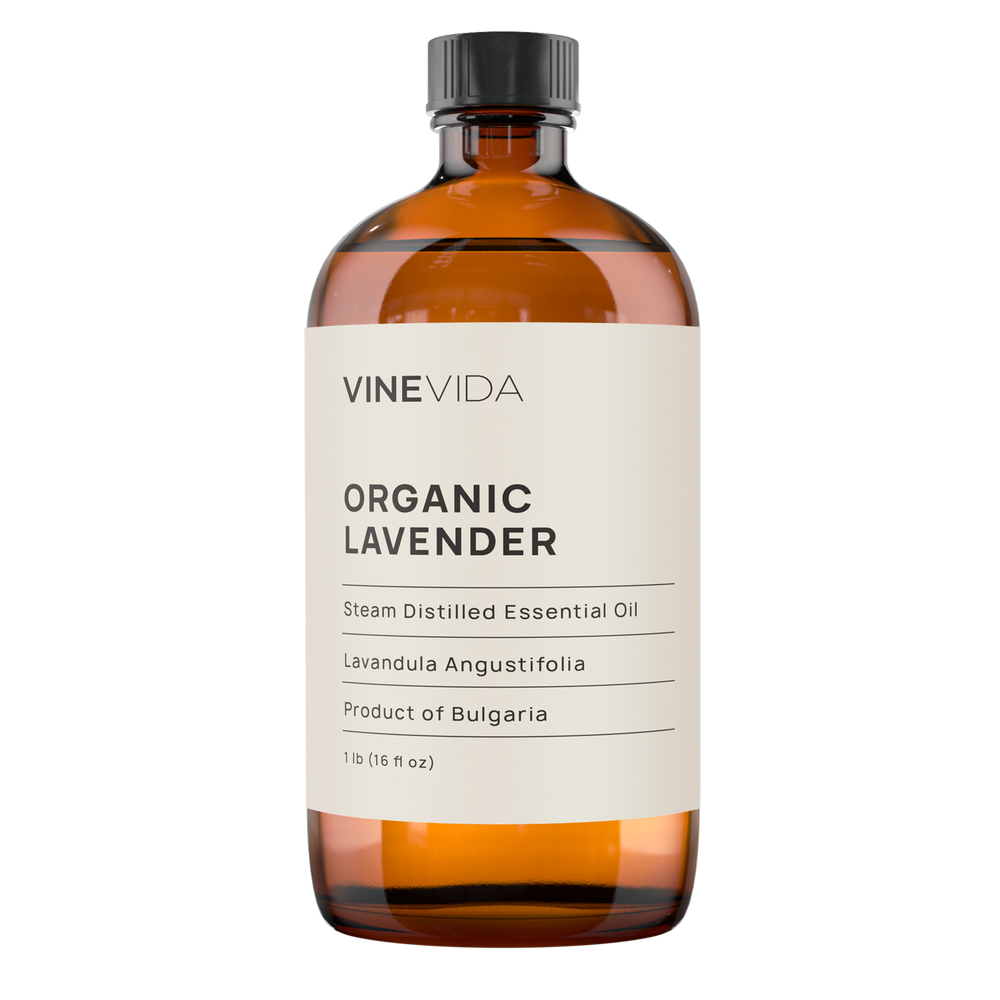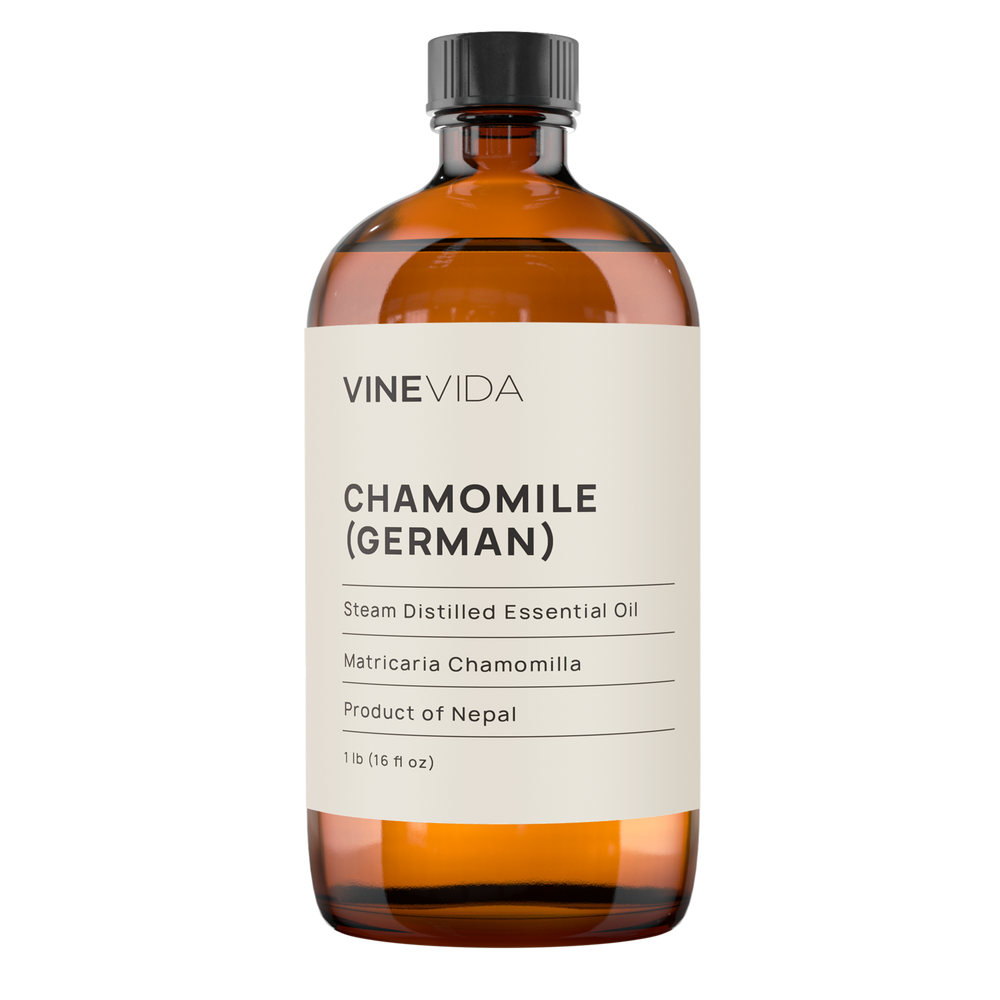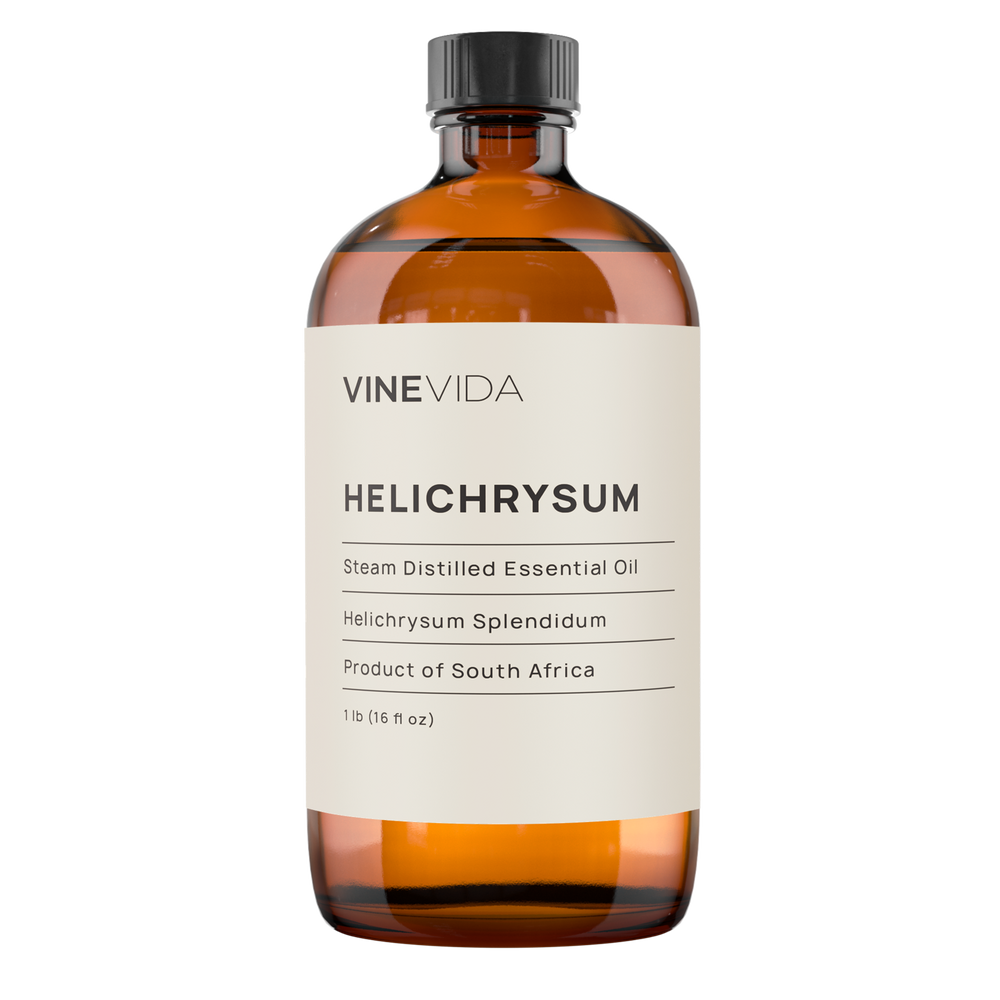In honor of International Psoriasis Awareness Week, the best essential oils for psoriasis are tea tree, cajeput, wintergreen, rose, and lavender. Lavender is not only soothing for itching and soreness but is also proven to have an antipsoriatic action. (Rai, 2020).
Preparations containing salicylic acid help soften, lift, and clear away skin flakes on psoriasis plaques and may also reduce swelling. Salicylic acid is often used with other topical treatments and may improve its effectiveness by removing scales.
Wintergreen essential oil comprises over 90% salicylic acid. Cajeput and tea trees support healthy immune function and are reasonably priced essential oils that help with psoriasis. Rose has a moisturizing and softening nature.
What Is Psoriasis
Psoriasis causes red and crusty skin patches often covered with silvery scales. It is believed to be triggered by an immune system glitch causing the body to overproduce skin cells.
Dermatologists usually treat mild psoriasis with creams or ointments. More severe conditions may require prescription medicines or a specialized light treatment known as phototherapy. Blending essential oils for psoriasis into creams and lotions works well in moisturizing the skin.
For example, lavender and German chamomile are tremendous essential oils for psoriasis because they're soothing and soften the skin.

Different Types of Psoriasis
Plaque Psoriasis
The most common type of psoriasis is plaque psoriasis.
Most people living with psoriasis have plaque psoriasis, either on its own or with other psoriasis strains. The ‘plaques’ can be red, itchy, and sore and form from a build-up of skin cells. They are caused by raised levels of blood flow running to the area, meaning the skin will replace cells far faster than it should.
Some people's plaques are thick and raised; others are thin but demarcated. Plaques look different from “ordinary skin'', covered in silvery, dry scales that feel rough to the touch. It is easy to discern the edges of plaques.
Plaque psoriasis can occur pretty much anywhere on the body. In addition, a slightly different type of plaque psoriasis manifests on the soles of the feet and the palms called Pustular Psoriasis.
Places where skin touches the skin, like the back of the knees, inside the elbows, the genitals, and armpits, also have a slightly different type of plaque psoriasis.
Guttate Psoriasis
The name comes from the Latin word for “drops'' and is often referred to as “rain” or “teardrop” psoriasis. It usually exhibits as a rash of small spots across the body, specifically over the torso, back, and limbs. It is often seen in children, teenagers, and people in their early twenties.
A person’s skin color often influences the color of the rashes, with fair-skinned people seeing pinkish spots and darker red ones on more olive skins. It can occur at any age but tends to occur most often in children, adolescents, and younger adults.
Usually, guttate psoriasis is widespread across the torso, back, and limbs and clears up after several weeks or months, depending on how quickly treatment is started. The spots may be itchy, but not necessarily.
Guttate psoriasis is often triggered when someone has had strep throat. Consequently, people more prone to these throat infections can also be more prone to guttate psoriasis. In addition, some people may continue to have flares from time to time or find it evolves into one of the other types of psoriasis.
In this case, I recommend using essential oils with an antiviral component, like eucalyptus or turmeric. Then use soothing essential oils for psoriasis soreness like lavender and German Chamomile.
Pustular Psoriasis
Pustular psoriasis exhibits red and darkened skin covered in fluid-filled pustules. It is also known as Palmoplantar Pustulosis, often abbreviated as PPP.
The main symptom of PPP is very red or dark patches on the palms of the hands or soles of the feet, covered with small blister-like pustules. These pustules have a yellow appearance from the fluid inside them and are very delicate.
They can burst and dry, then crust over and go brown. This continuous breaking and thickened state mean that the skin becomes incredibly sore.
Topical treatments such as coal tar or that contain salicylic acid may help reduce thick scaling. However, I think the best essential oils for psoriasis of this type are myrrh and galbanum. They are lovely skin healers, preventing infection when the skin breaks.
Scalp Psoriasis
Scalp psoriasis is common and causes dandruff-like flakes, making the scalp itchy and sore.
Similar to plaque psoriasis that you find on other areas of the body, it tends to manifest as a very thick build-up in the hairline, and the scales flake off.
Helichrysum and geranium are lovely essential oils for psoriasis of scalp skin. Ordinarily, the thicker the ointment base, the better, but this won’t work on the scalp. It’s just going to stick in your hair.
Add your essential oils for psoriasis into an aqueous cream you can obtain over the pharmacy counter.
In many skin conditions, but especially scalp psoriasis, there can be problems with a fungus called Malassezia.
A 2019 study in Italy assessed whether essential oils were active against Malassezia spores in a petri dish. All the essential oils, including Thyme, tea tree, Cinnamon, Basil, Rosemary, Oregano, Clove, Fennel, and Myrtus, were all active against the spore. (Donato, 2019)
Though, there are some vicious oils in that list, like oregano or cinnamon, that we would want to be very careful using on delicate and inflamed skins.
Nail Psoriasis
Nail psoriasis is widespread, affecting about half of all people with psoriasis and around 80% of those with psoriatic arthritis. It can affect fingers or toenails. As with other psoriasis, nail psoriasis may have flare-ups and then better.
It is possible for a person only to have nail psoriasis but no other plaques anywhere else on the nails, with no other psoriasis on the skin.
It is commonly misdiagnosed as a fungal infection. Any of the following signs may suggest nail psoriasis:
- The nail loses its usual healthy shape, look, shape and texture.
- The nails thicken, and they split or crumble easily.
- The nail discolors and minor dents are known as “Pitting” forms across the nail.
- Nails detach and lift themselves from the nail bed, a condition known as onycholysis.
Psoriatic Arthritis
A strange complication that can occur is that around 20% of people who have psoriasis can then go on to develop arthritis. Psoriatic arthritis presents as pain and stiffness in the joints.
Essential oils for psoriatic arthritis are essentially the same, but it makes sense to use larger quantities of oils like lavender to help support healthy joint function.
Essential Oils and Psoriasis - Do They Work?
That’s probably a loaded question because essential oils are not licensed as drugs, so we should not make medical claims about them. Furthermore, they are often not just physical ailments; stress can affect them.
Essential oils can soften the skin.
They reduce itching, and they most certainly help to manage stress.
Have I seen them work for psoriasis?
Oh yes. SOOOO many times.
Can we say aromatherapy cures it?
No. And neither should we since everyone’s experience of psoriasis, and essential oils are likely to be different.
In addition, other factors may exacerbate the condition that might be outside of any help that essential oils for psoriasis can be.
Are there any natural remedies for psoriasis apart from aromatherapy?
Other Holistic Help for Psoriasis
First and foremost is diet. Psoriasis seems to thrive in an acid-rich environment. Therefore, eating an alkaline diet has been hailed as a near cure.
I would suggest finding a specialist book about this. There are plenty on the market, but I usually recommend that my clients eat a piece of raw potato daily.
My mom always gave us raw chips (fries to you, I guess) when she was cooking, and it is one of my favorite childish pleasures, but I recognize it might not be everyone’s cup of tea!
The chemistry is tremendously odd because potatoes, themselves, are acidic. However, the renal load they place on the body has a net alkaline effect.
Please don’t ask me to explain that more. I’ll have to blag you by waving my star-tipped wand and saying, “It’s magic!” I don’t understand it myself. However, a piece (about 1 oz a day) of raw, peeled potato can do marvels for psoriasis and arthritis.
There's a requirement for many pharmaceuticals to treat psoriasis and liver toxicity. Supplements of the B complex are helpful to fuel the liver. Vitamin B Complex requires Vitamin C to absorb.
In the same way, essential oils rubbed on the liver meridian may be helpful to jump-start the body’s detoxification and cleansing.
Finally, in every case, do not underestimate the importance of the spine being straight. Often a slipped vertebrae can send stress signals along nerves to organs. The skin, after all, is our largest organ.
The slightest misalignment can do catastrophic things to the body. A consultation with a chiropractor can often supercharge the success of essential oils for psoriasis.
What Essential Oils are Good for Psoriasis
Now there is a lot of data there, so let’s switch it around and look at how each of the specific essential oils for psoriasis work for us.
Softening Essential oils for Psoriasis
1. Wintergreen
Wintergreen essential oil is a powerful and vital healer. However, when I qualified in the ’90s, it was high on the list of hazardous oil. This should give you pause every time you pick up the oil.
The hazard comes from how much Aspirin thins the blood. You may recognize the constituent name Salicylic acid. It is what Aspirin thins the blood to protect us from heart attacks and strokes, and the doctor recommends taking half a tablet daily.
Wintergreen is approximately 30 times stronger than aspirin. So you can see how it would be an excellent painkiller, and indeed it is brilliant for arthritis, for example.
Consider then how dangerous it would be if someone who took an aspirin every day also used a pain-killing liniment with wintergreen, then fell and cracked their head. The blood flow would be fast, and a tiny clotting factor would help them.
The oil was taken from the list because instances of overdosing on wintergreen are rare or perhaps rarely reported. However, it is often hidden since you can even find it in my toothpaste.
It does have that same cold feeling as mint - probably even more so, so that can sometimes be an indicator.
Be on the lookout for it, and talk to your physician about using it if you are prescribed aspirin, are already on blood thinning medications, or have a platelet disorder.
We only want to use it with minimal dilution - 1% will be enough.
Safety: Not suitable for use if you are taking blood-thinning medications or have a clotting disorder. Discontinue use 48 hours before planned surgery. Not suitable for use in the first 16 weeks of pregnancy.
2. Rose
This is more a cosmetic recommendation if that makes sense? Rose is softening, hydrating, and moistening. This would be one of the prominent essential oils for psoriasis that is dry, hard, and flaky, but also for people who have it on their face.
It is probably the best oil for scalp psoriasis, especially if you can supplement it with oils with antibiotic and antifungal properties too.
Safety: Not suitable for use in the first 37 weeks of pregnancy.
3. Geranium
It is probably the best essential oil for psoriasis if you can see a clear connection with stress. It has all the great stuff that rose has but is less expensive, of course, and it is excellent for bringing the body back into balance after long-term exhaustion and tension.
Safety: Not suitable for use in the first 16 weeks of pregnancy.
4. Frankincense
Frankincense has two main healing themes. First, it slows the breath, which is great for issues like asthma, meditation, and prayer, and restores tissues' elasticity.
In skin care, it’s excellent for mature skins that have gone wrinkly and saggy, but I have listed it as one of my best essential oils for psoriasis because I find it remarkable for psoriasis on the hands, how the skin starts to crust and become stiff.
I have seen people who could not open their hands for one week and regained complete flexibility after using frankincense for a month.
Again, it restores elasticity to connective tissues such as tendons and ligaments, so it can also help people with psoriatic arthritis.
Safety: Not suitable for use in the first 16 weeks of pregnancy.
5. Lavender
I won’t be too verbose because it is pretty apparent. I think it will not only soothe itchy and sore skin but also calm the emotions that may be causing flare-ups.
Again, as a reminder, earlier, we posted a trial proving that it has an anti-psoriatic nature too.
Safety: Not suitable for use in the first 16 weeks of pregnancy.
6. German Chamomile
Again, soothing, calming, anti-itch, and anti-inflammatory. I love this oil but can never find much to say about it. I think it’s because it does everything!
Safety: Not suitable for use in the first 16 weeks of pregnancy.
Essential Oils for Psoriasis - Antibiotic Natures
7. Cajeput
Cajeput seems to have gone out of fashion as one of the best essential oils for psoriasis, and genuinely, I have no idea why. So I thought you might find it interesting to see a recording I made for my Recipe Hub, a collection of over 500 essential oil video recipes.
The video is called Helichrysum ointment, but I think you will get many more insights into the different levels of essential oils for psoriasis work. Not least, it’s interesting to hear the metaphysical aspects of cajeput. What else is happening outside of what we see in the physical body?
I just watched the video back, and I noticed there was quite a long black period at the end of my talking… But, wait…the recipe for the cream I am talking about will come up on the slide.
8. Helichrysum
When I wrote my Helichrysum book, I named it after its most powerful action, healing wounds. Now that can be cuts and abrasions, or just as likely, psychological injuries like PTSD.
In this case, I adore how it softens and supports skin healing. It fortifies the skin, mind, and sheer emotional distress of being covered in these scales.
Interestingly too, Helichrysum is proven to have both antibiotic and antifungal properties.
Aromatherapy Recipes for Psoriasis
How to make an Ointment for Essential Oils for Psoriasis
As with all types of psoriasis, it is important to moisturize to help the skin to feel more comfortable. This softening then helps ant ‘active’ topical treatments (such as steroid creams) that the doctor has recommended to absorb too. In the case of PPP, moisturizing can also help prevent or reduce skin cracking.
Ointments can be helpful.
I am putting a video about how to make ointments here. Many things could be improved about the production of this video, but that’s a job for another day. Now, it will help you create your ointment.
You might not find it easy to find “Lanette Wax” in the States. In which case, any “Emulsifying wax” will work.
You’ll see my handwritten ointment recipe at the end.
Carrier Oils for Psoriasis
Carrier oils can be great for improving your ointment's texture and efficacy. I usually exchange some of the water for a carrier oil.
Vitamin D-based treatments can also be helpful in nail psoriasis. Carrier oils rich in Vitamin D include almond and sunflower oils. The treatment can be applied to the affected area, and the fingers are wrapped or covered to help it to absorb. Calendula can be beneficial.
Calendula oil makes a lovely massage oil base, but I like to use it to make golden, rich, creamy ointments. It is a maceration of flowers placed into another carrier of oil. It is so easy to make; honestly, I don’t think there is a better skin healer. I describe how to make it on our grapeseed oil product listing.
Psoriasis Soften and Soothing Salve
- 1 oz Blank Ointment
- 1 drop Wintergreen Essential Oil (Gaultheria Procumbens)
- 1 drop Rose Essential Oil (Rosa Damascena)
- 1 drop Helichrysum Essential Oil (Helichrysum Splendida)
- 1 drop Cajeput Essential Oil (Melaleuca Cajuputi)
- 1 drop German Chamomile Essential Oil (Matricaria Chamomilla)
- 1 drop Myrrh Essential Oil (Commiphora Myrrha)
Method of Use
No need to apply to all plaques, merely to a couple of the worst. Essential oils absorb through the skin and into the bloodstream and will find their way to the parts that need them. Avoid applying to broken and open cracks.
For the first week, build up your oils by using them as often as you remember, ideally about seven times a day. After that, drop down to morning, noon, and night.
Safety
Not suitable for the first 37 weeks of pregnancy. If you remove rose and myrrh, you could bring that forward to be safe after 16 weeks.
If you want further advice, I like this video too, although it has nothing to do with me!
Conclusion
Over the years, I have seen many skins improve with essential oils for psoriasis. However, the best effects came from people who thoroughly addressed their lifestyle. They engaged with the diet, inhalers, and meditation to get ahold of their stress and nourished their body using vitamins and minerals.
The essential oils were part of a bigger plan, as I always feel they should be. You may think that a qualified aromatherapist may be able to help you more than you can do on your own. If that is the case, you know where to find me! Best of luck. I hope this article helps, and you can tell your own success story about how aromatherapy helped your psoriasis.
















